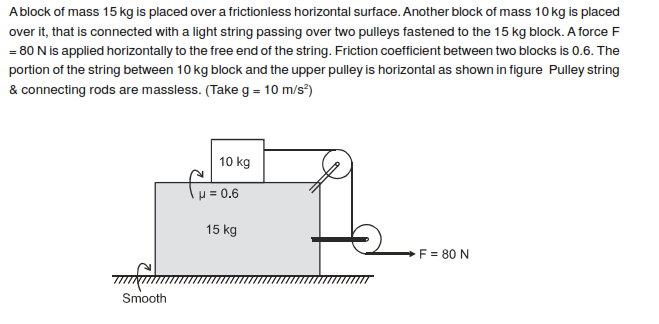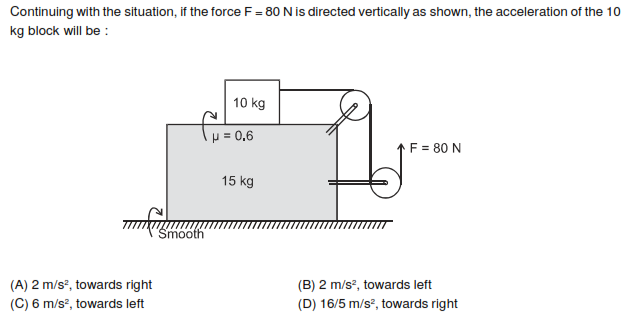How is it done(physics)?

Question;
1)The magnitude of acceleration of the 10 kg block is :
2)The magnitude of acceleration of the 15 kg block is :
3)If applied force F = 120 N, then magnitude of acceleration of 15 kg block will be
4)
5)In the situation of the previous question, acceleration of the 15 kg block will be :
Question;
1)The magnitude of acceleration of the 10 kg block is :
2)The magnitude of acceleration of the 15 kg block is :
3)If applied force F = 120 N, then magnitude of acceleration of 15 kg block will be
4)
5)In the situation of the previous question, acceleration of the 15 kg block will be :
1 Answer
(1)
(5)
Explanation:
(1). Normal reaction
Frictional force
Net force
Acceleration of
or
(2). Let us examine what is the force acting on
We know that action and reaction are equal and opposite. Hence, there will be a reaction of
(3). For an applied force of
There is no change of force of friction. Hence, there is no change in the reaction force on
(4). Assuming that pulleys are friction-less, these are used to change the direction of applied force. The magnitude remains the same.
(5). By the same logic applied as in (4). above
